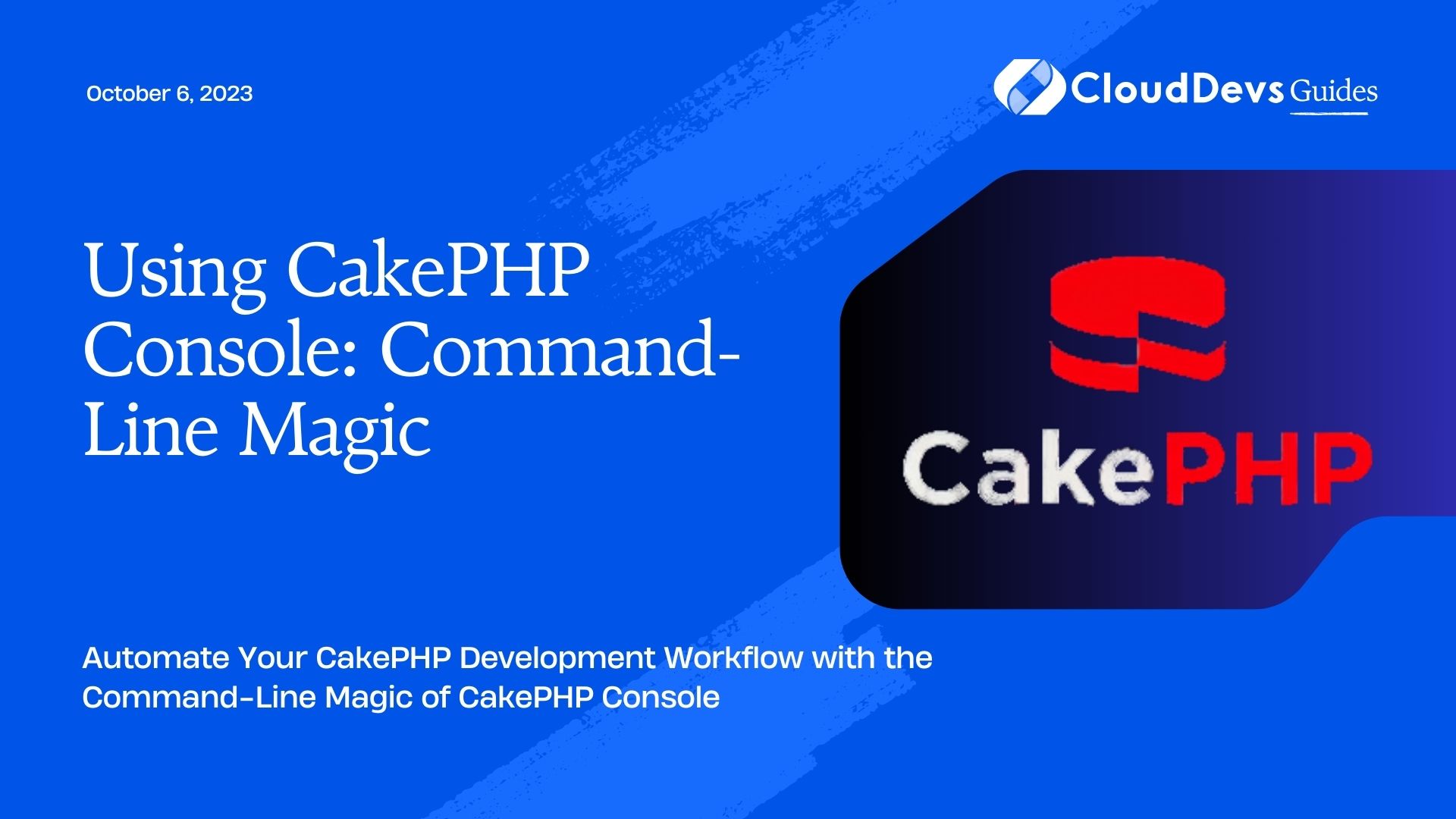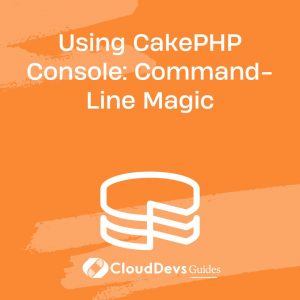Using CakePHP Console: Command-Line Magic
As a CakePHP developer, you might already be familiar with the framework’s powerful capabilities for building web applications. However, there’s another side to CakePHP that many developers overlook or underutilize—the CakePHP Console. The CakePHP Console is a command-line tool that can significantly boost your productivity, automate tasks, and simplify development workflows. In this blog, we’ll explore the wonders of CakePHP Console, its commands, and how to use it effectively to make your development process smoother.
1. What is CakePHP Console?
CakePHP Console is a command-line tool that comes bundled with CakePHP. It provides a set of powerful commands that allow you to perform various tasks related to your CakePHP application, such as generating code, running database migrations, and executing tests. The CakePHP Console is based on the CakePHP shell, which is essentially a command-line version of your CakePHP application.
2. Getting Started
Before we dive into using CakePHP Console, let’s ensure you have everything set up. Make sure you have a working CakePHP project and that the cake command is available in your terminal. If you have not installed CakePHP globally, you can use the following composer command to install it:
bash composer require cakephp/cakephp
Once you have CakePHP installed, you should be able to access the CakePHP Console using the cake command followed by the desired task. For example, to see the available tasks, simply run:
bash Cake
This will display a list of available commands and tasks.
3. Harnessing the Power of CakePHP Console
Now that you have the CakePHP Console set up let’s explore some of its most useful commands and how they can enhance your development workflow.
3.1. Code Generation
CakePHP Console offers powerful code generation capabilities. Instead of manually creating files and classes, you can use the bake command to quickly generate code for models, controllers, views, tests, and more. This not only saves time but also reduces the chances of typos and syntax errors.
To bake a model, for example, you can use the following command:
bash cake bake model ModelName
Replace ModelName with the name of your desired model. The bake command will automatically generate the corresponding model file in the appropriate directory with basic CRUD operations and database table associations.
3.2. Running Migrations
Migrations are an essential part of database schema management. With the CakePHP Console, you can easily create and run migrations without leaving your terminal. The migrations command allows you to perform tasks like creating new migrations, applying them, and rolling them back if needed.
To create a new migration, run:
bash cake migrations create MyNewMigration
Replace MyNewMigration with a descriptive name for your migration. This command will generate a new migration file in the config/Migrations directory, where you can define the necessary schema changes.
To apply the migrations and update your database schema, use:
bash cake migrations migrate
3.3. Database Seeding
Populating your database with sample data for testing and development is a common task. The CakePHP Console makes it easy with its seed command. You can create custom seeders to insert dummy data into your database tables.
To run seeders, use the following command:
bash cake seed
3.4. Running Tests
Testing is an integral part of any robust application. With the CakePHP Console, you can run your tests from the command-line, allowing you to automate the testing process.
To execute tests, use:
bash cake test
You can also specify individual test cases or test suites to run with the –filter option:
bash cake test --filter MyTestCase
3.5. Managing Plugins
CakePHP Console simplifies the process of installing, updating, and removing plugins in your project. The plugin command allows you to handle all plugin-related tasks effortlessly.
To install a plugin, use:
bash cake plugin load PluginName
Replace PluginName with the name of the plugin you want to install. Similarly, you can use unload to remove a plugin and update to update a plugin to its latest version.
4. Advanced CakePHP Console Techniques
Beyond the basic commands, the CakePHP Console also offers some advanced techniques that can significantly enhance your development workflow.
4.1. Creating Custom Shells
While CakePHP Console provides a variety of built-in shells for common tasks, you can create your custom shells for more specialized or project-specific tasks. Custom shells allow you to encapsulate complex logic and reuse it across your application.
To generate a custom shell, run:
bash cake bake shell MyCustomShell
This command will create a new shell file in the src/Shell directory. You can then define your custom logic and use it via the CakePHP Console.
4.2. Using Shell Options
Many CakePHP Console commands accept options that modify their behavior. For instance, you can pass a –plugin option to specify a plugin when baking code, migrating, or running tests for a plugin-specific task. Similarly, you can pass options to customize the output format, verbosity level, and more.
For example, to run a specific test case with a custom test database, you can use:
bash cake test --filter MyTestCase --database custom_test_db
Remember to check the documentation for each command to explore the available options.
Conclusion
The CakePHP Console is a powerful tool that every CakePHP developer should have in their toolkit. Its command-line magic can streamline your development process, reduce manual errors, and increase overall productivity. In this blog, we’ve explored some of the most common and advanced commands and techniques available through the CakePHP Console. As you continue your journey with CakePHP, make sure to harness the full potential of the Console for efficient, enjoyable, and hassle-free development. Happy baking!
Table of Contents








